I’ve had fun using Google Maps’s Measurement Tool to estimate distances at all sorts of minor league ballparks. You’ve perhaps seen me use it to check out the distances of splash hits into pools and into natural bodies of water. I’ve also used it to help illustrate two specific ballpark memories — the longest home run I ever snagged and a glass-shattering home run that I was lucky to witness.
In this post, I’m once again using the Measurement Tool to figure out distances from home plate to certain areas inside and outside of different minor league parks. I’m looking at home runs that aren’t splash hits, but are instead things I’ve either seen or wondered throughout my travels. Below are 10 minor league parks that I’ve visited — some as early as 2010, and some as recent as 2023.
For those who are new to these posts, you’ll see two white dots on each image. One dot marks the location home plate and the other dot marks the spot that I’m discussing.
So, without further delay, here are 10 minor league parks and some fun measurement-related topics that I’ve enjoyed thinking about, researching, and writing about.
Rochester Red Wings | Innovative Field
Few minor league parks offer the same sentimental feel to me as Rochester’s Innovative Field. (Although there’s a part of me that will always call it Frontier Field in my head.) It was the first ballpark I visited when I started my website and blog in 2010, and I’ve been lucky to attend Red Wings games on numerous occasions over the years. Between batting practice sessions and games, I’ve seen a lot of home runs at this International League facility. I’ve often wondered what it would take for a right-handed batter to reach North Plymouth Avenue on the fly. Often, I’ve had this thought while watching batting practice home runs leave the park. The answer is about 430 feet to left-center field to reach this busy street.
Buffalo Bisons | Sahlen Field
Do you remember when the Toronto Blue Jays called Buffalo’s Sahlen Field home during part of the bizarre 2021 MLB season? (The Jays also played their home games in Dunedin and Toronto.) If so, you’ll likely recall home runs hit to left field landing on a street — often as cars whizzed past. This precarious scene routinely attracted fans who were trying to snag baseballs without entering the park. The edge of Oak Street, a four-lane road that provides access to Interstate 190, is reachable with a home run of about 355 feet.
Binghamton Rumble Ponies | Mirabito Stadium
I’ve snagged a lot of batting practice home runs at Binghamton’s Mirabito Stadium simply by standing in the parking lot behind right-center field. Lots of BP baseballs end up on the asphalt, and with good reason. Turns out, a homer of 390 feet to right-center will reach the parking lot, where it’ll bounce or roll into your glove if you’re standing ready. When I visit this lot, it always amazes me that there are at least a dozen cars parked within home run range. I’m certain some cars have suffered dents over the years.
Durham Bulls | Durham Bulls Athletic Park
Without question, Durham Bulls Athletic Park is one of my favorite all-time parks to visit. A home run hitting the famous “Hit Bull, Win Steak” billboard above the left field fence is perhaps the most intriguing thing to measure, but I’m more interested in knowing what it would take for a home run to enter the patio of a nearby sports bar. The Tobacco Road Sports Cafe is a popular spot for fans both before and during games, giving diners a chance to see the game from their patio seats. The patio is large, but a home run of about 343 feet could easily reach it. This means if you’re looking to snag a baseball before DBAP’s gates open, the sports bar is a good place to visit.
Midland RockHounds | Momentum Bank Ballpark
During my lone visit to Midland’s Momentum Bank Ballpark — the 50th different MiLB park I visited, yay! — I spent a fair amount of time standing on the tall hill behind the left field fence. If you’ve been to this Texas League park, you’ll know the hill I’m talking about. It serves as a berm for fans during games, providing a unique, elevated view of the field. There was no batting practice on the day of my visit, as it was a doubleheader. With no BP to watch, I found myself wondering what it’d take for a home run to reach the hill on the fly. The answer is about 460 feet to the top of the hill, which is obviously quite a lot. The base of the hill is much easier to reach, requiring a home run of about 378 feet.
Down East Wood Ducks | Grainger Stadium
Kinston’s Grainger Stadium played host to one of my favorite ballpark visits in recent memory, and it’s a shame that the Wood Ducks are in their final months as a franchise. (The 2024 season will be the team’s last in Kinston before relocating to South Carolina.) When I look at a satellite view of this historic park, I can’t help but think about the home run I snagged during my lone visit. It was a home run by Down East’s Cameron Cauley, and I used a tactic I’ve used several times in the past — hurrying out of the park after the home run and finding the baseball beyond the outfield fence. I’ve marked approximately where I found the ball, which means that it traveled about 420 feet.
Columbus Clippers | Huntington Park
When it comes to snagging a batting practice baseball outside of a ballpark before the gates open, your best bet is generally a park in the lower levels of the minor leagues. That’s because these parks are smaller and often devoid of outfield seating, which means that a baseball that flies over the outfield fence often lands in a grass field, parking lot, or some other comparable space. One exception to this rule is Huntington Park in Columbus, a beautiful Triple-A facility. During every BP session, some home runs to right-center field leave the park through a gap between the video board and an elevated seating deck. These baseballs land on West Nationwide Boulevard, where collectors typically scramble after them. The middle of the street is only 378 feet from home plate, which makes it easily within range for hitters.
Toledo Mud Hens | Fifth Third Field
I’ve only been to Toledo’s Fifth Third Field once, but one of its seating sections has intrigued me over the years. That section, called The Roost, sits high above the field behind the right field foul pole. It’s easily one of the most unique seating sections in the minor leagues, offering fans an elevated view of the field that the seldom get outside of the big leagues. I didn’t see any home runs hit into The Roost during my visit, but I was pretty sure it’d be reachable for a player. Although a home run has to be towering to reach this area, it’s only about 327 feet from home plate to the first row of seats.
Harrisburg Senators | FNB Field
I was initially tempted to include Harrisburg’s FNB Field in my MiLB splash hits post, but a bit of research indicated that the Susquehanna River is out of range for hitters. Instead, I want to focus on the parking lot that is a short distance behind the left-center field fence. It’s a place in which I’ve snagged batting practice baseballs over the years. Baseballs don’t reach the parking lot on the fly; this area is more than 470 feet from home plate. Instead, baseballs that land on the elevated concourse in left-center (which is about 393 feet from home plate) bounce high into the air and eventually land in the parking lot.
Delmarva Shorebirds | Arthur W. Perdue Stadium
If you’ve followed my travel adventures for a more than decade, you’ll remember my entertaining saga of catching the first South Atlantic League home run hit by former Orioles minor leaguer Jeremy Nowak. It’s still one of my favorite all-time baseball stories. Jeremy hit the home run in question about 350 feet, I’ve estimated. I don’t know exactly how far the baseball rolled after it landed behind the right field fence, but based on photos I took at the scene, I think a flight distance of about 350 feet seems realistic.
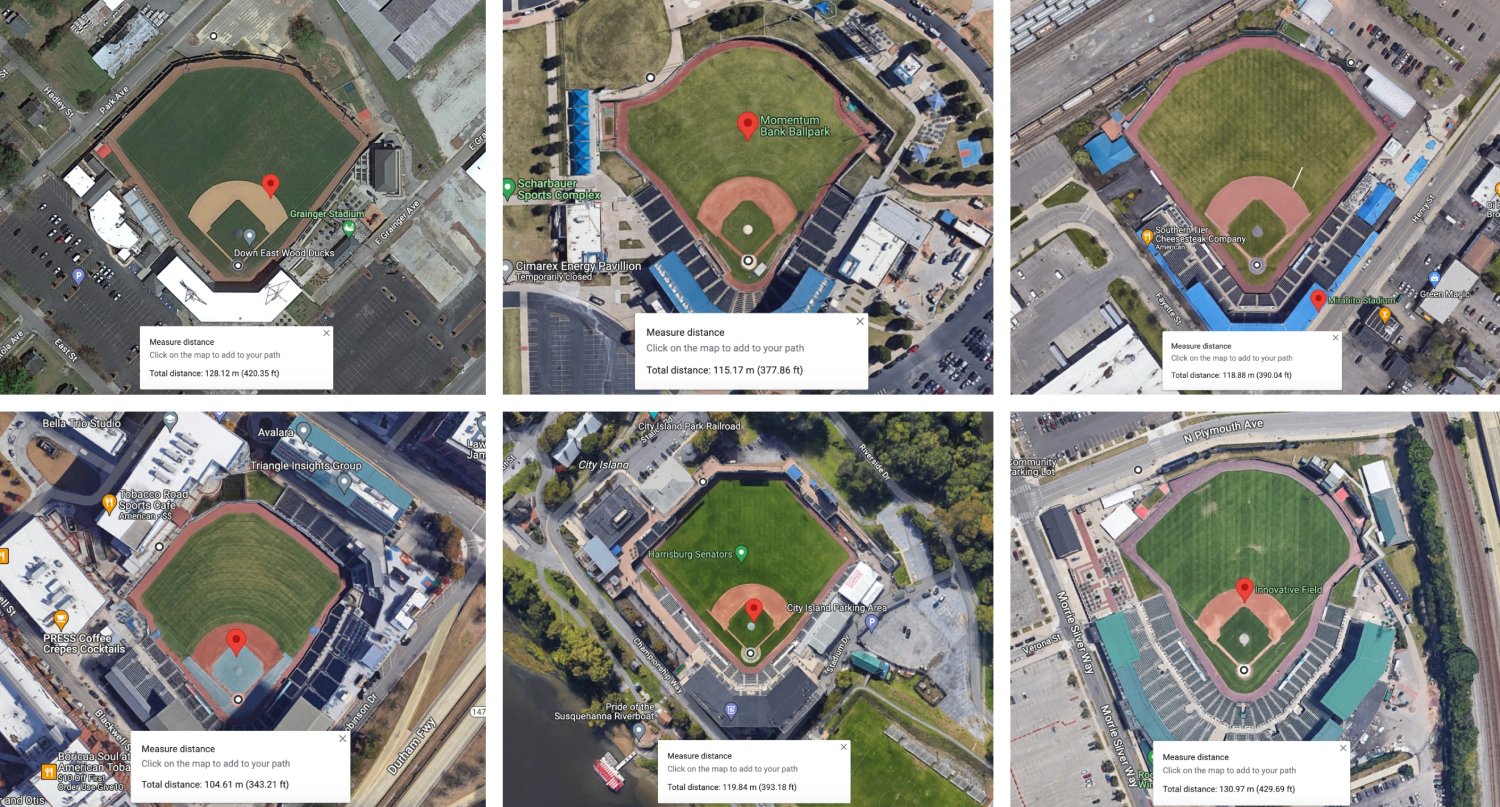
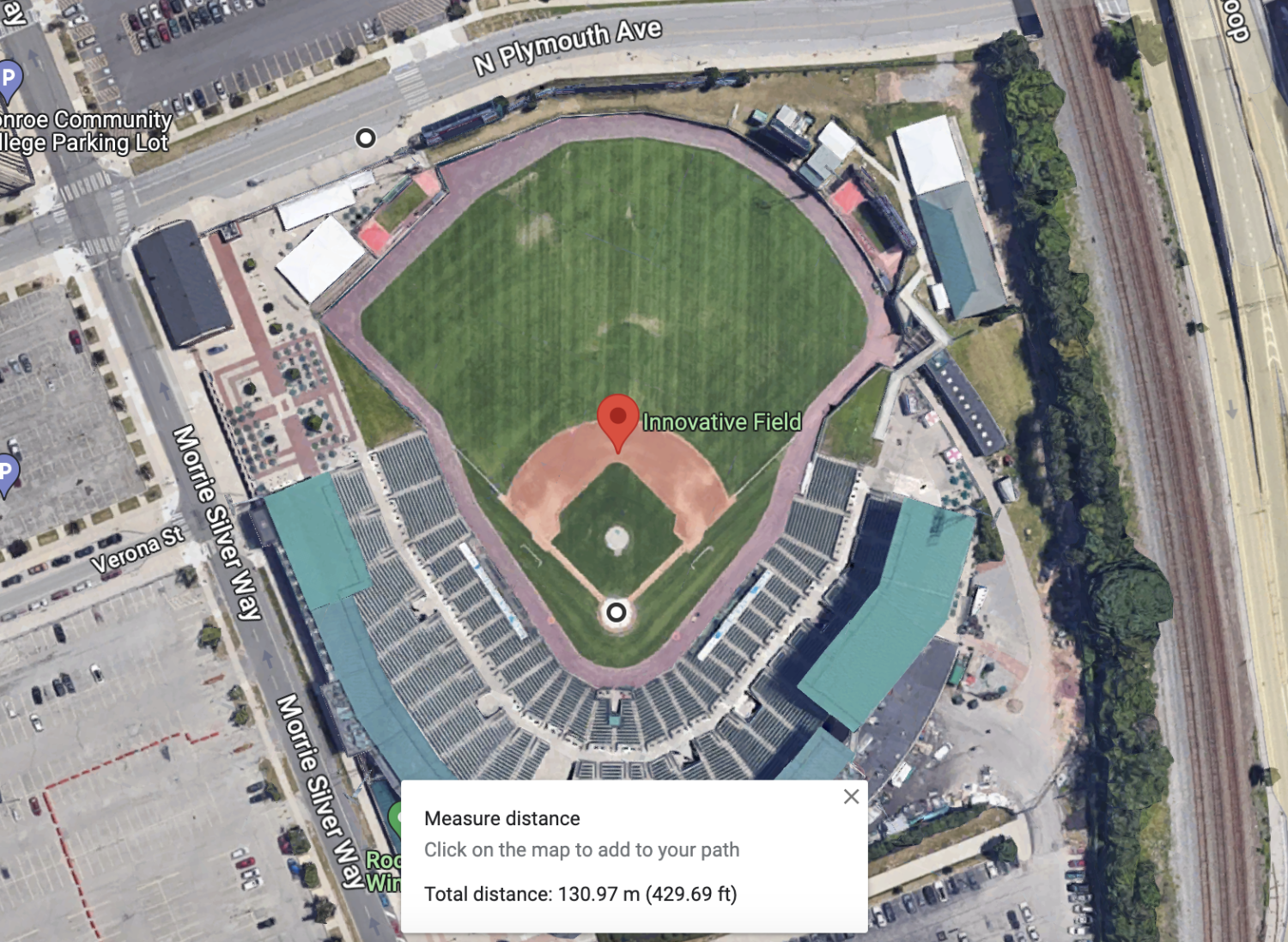
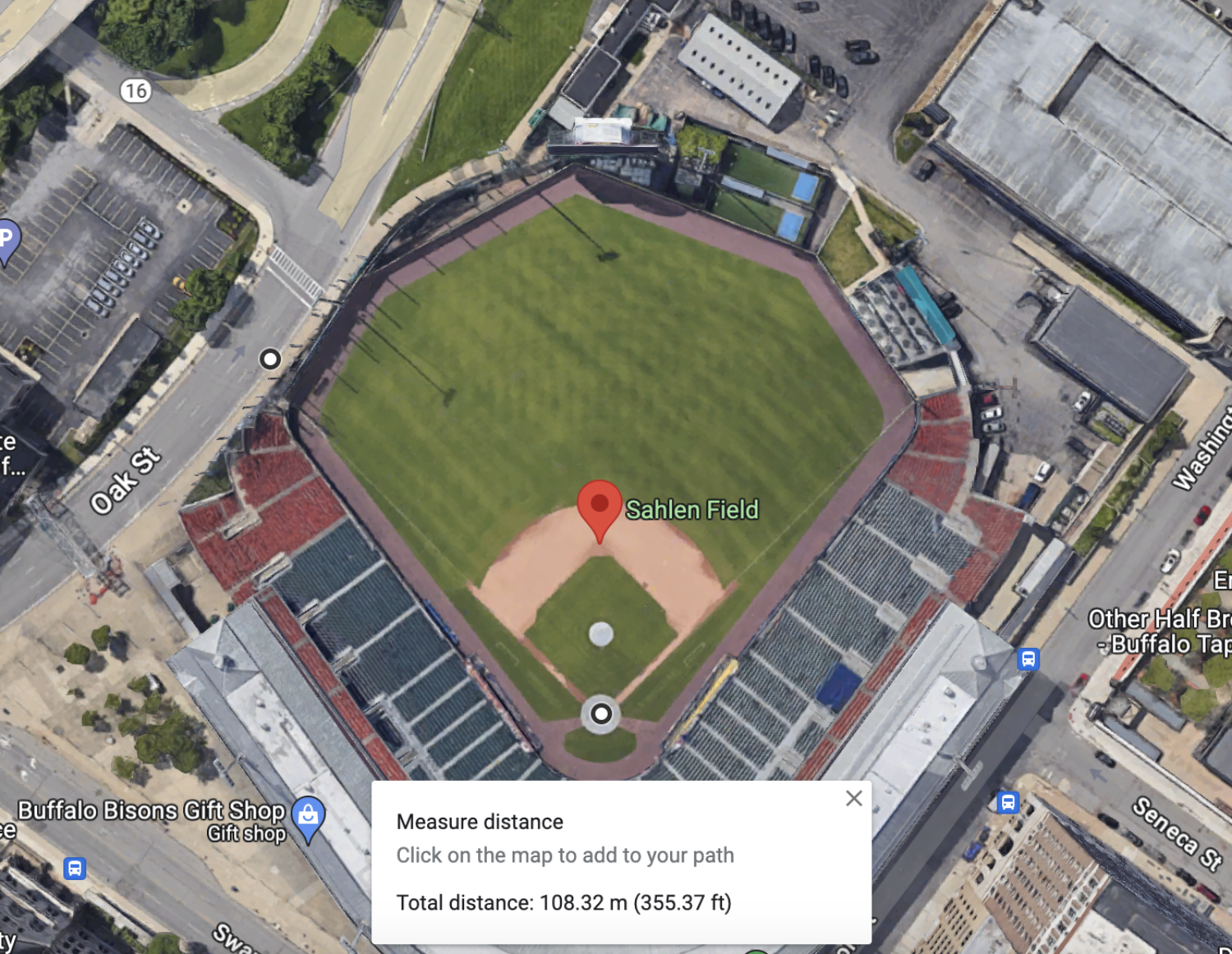
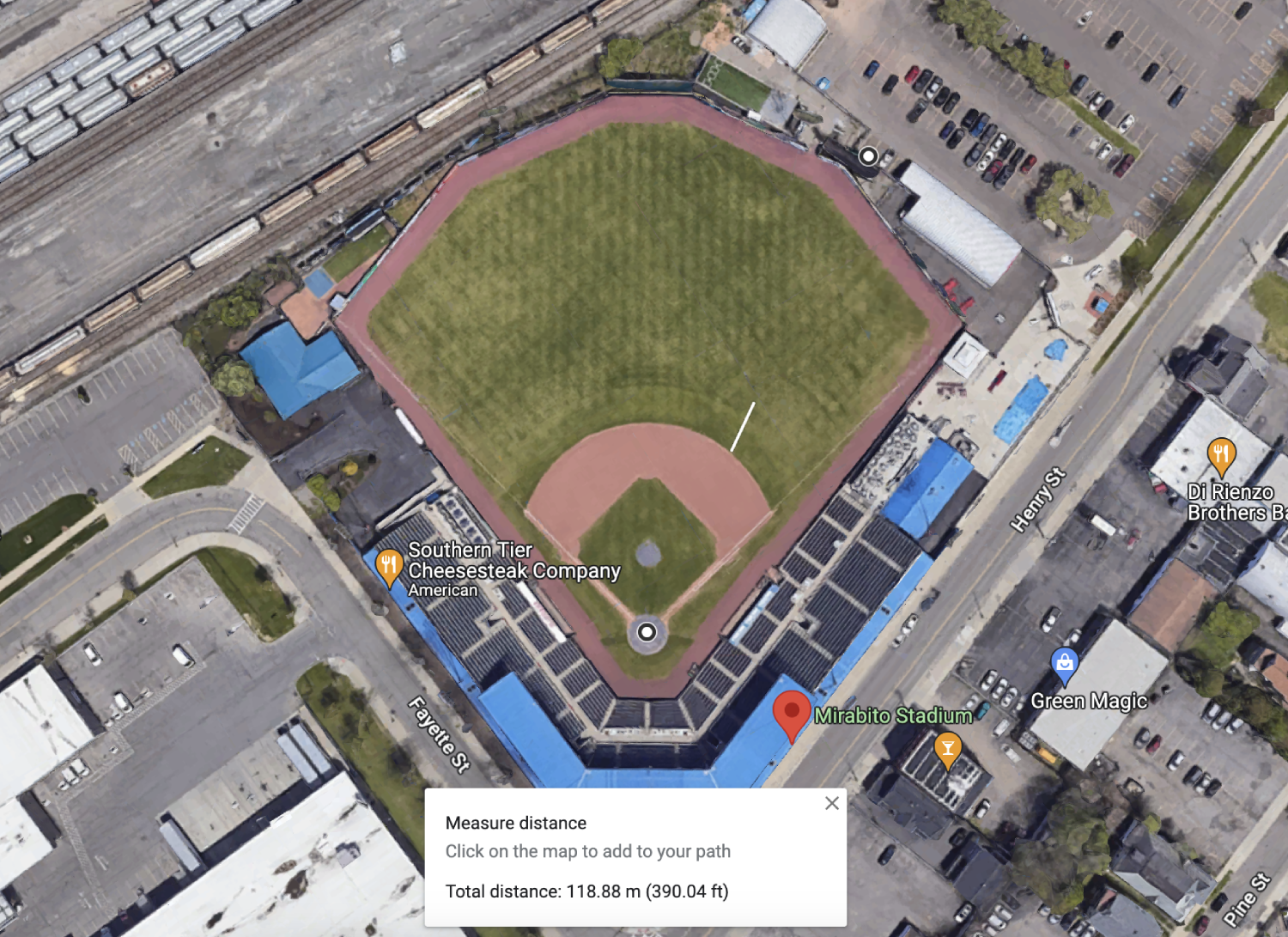
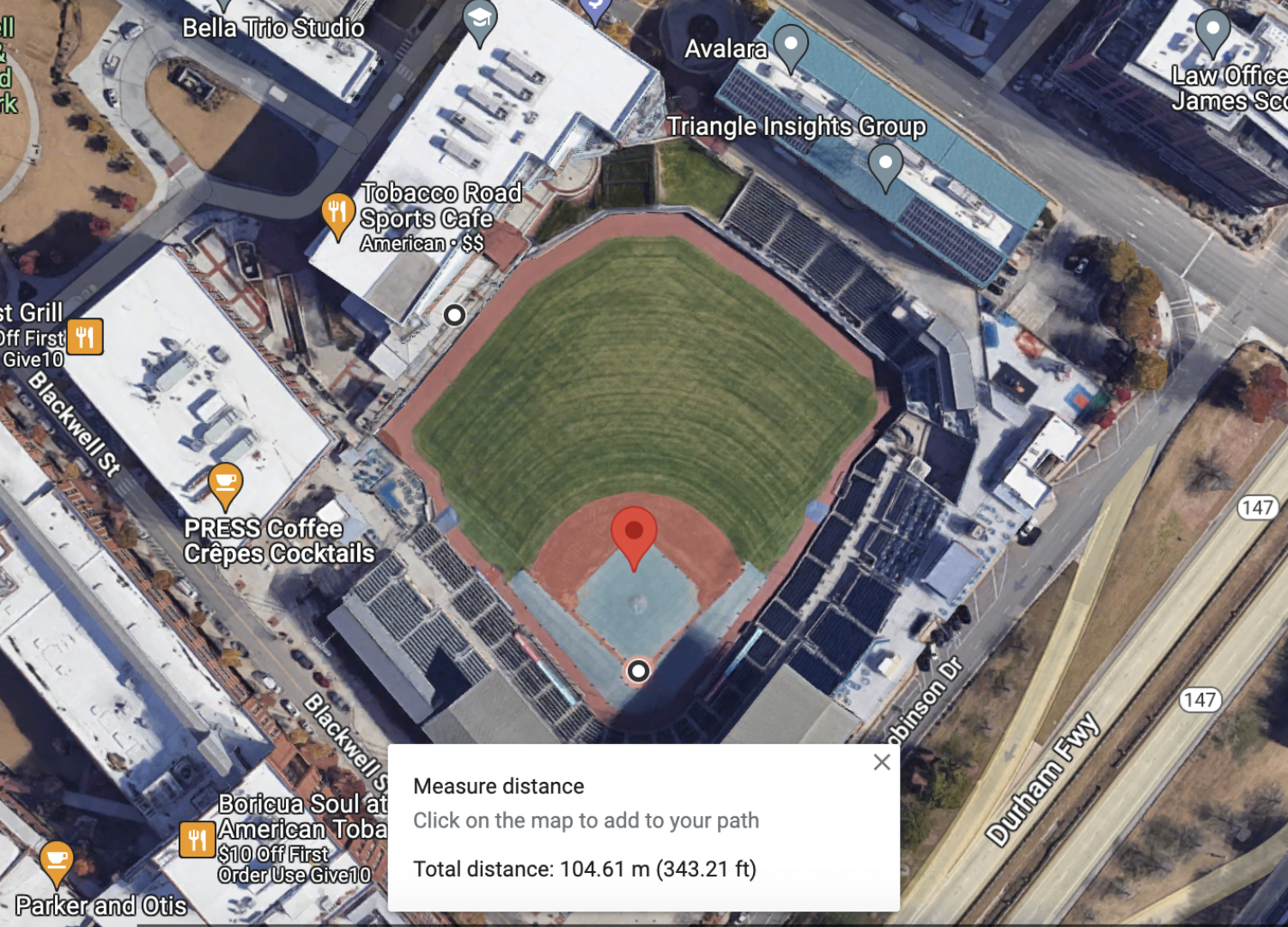
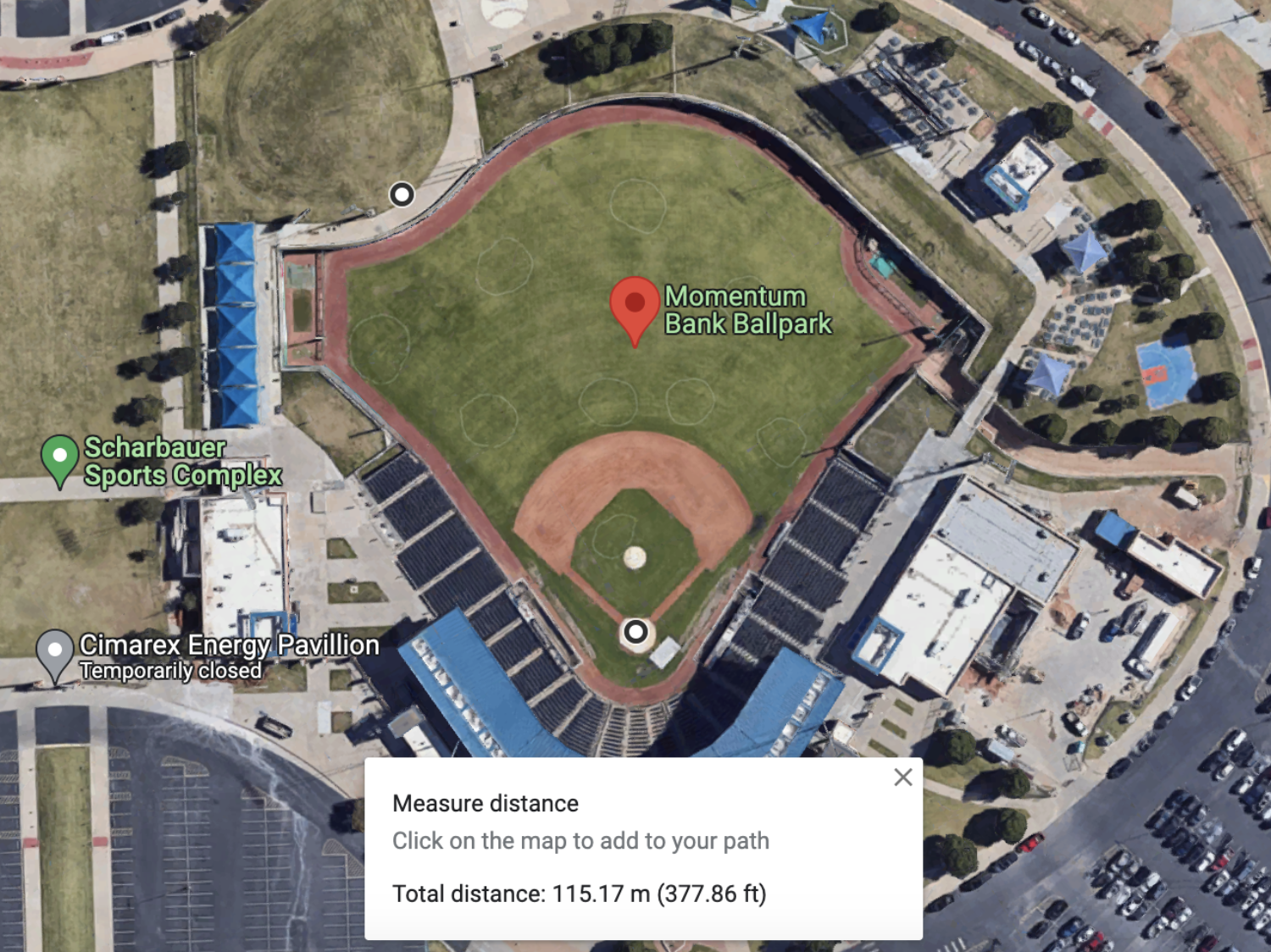
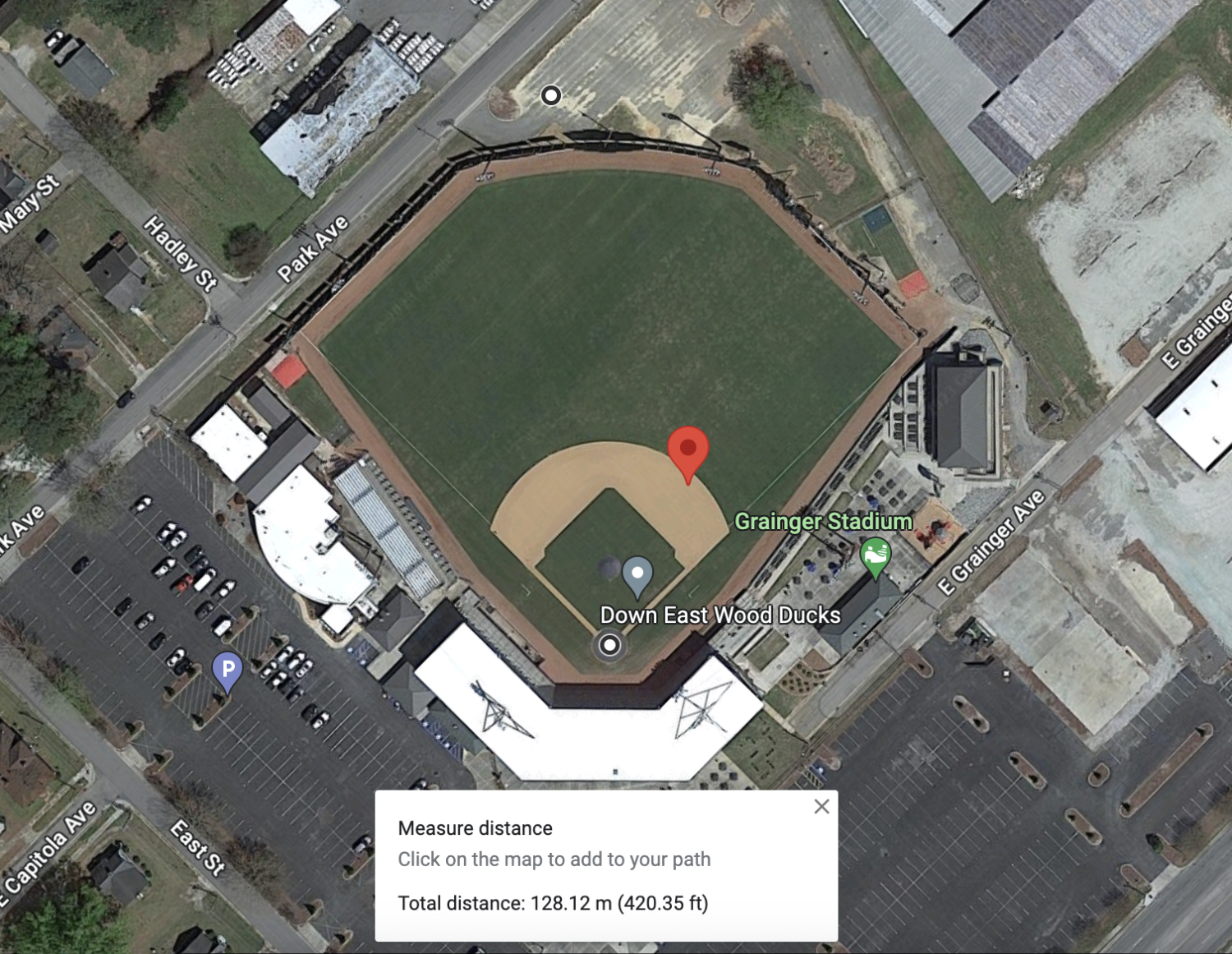
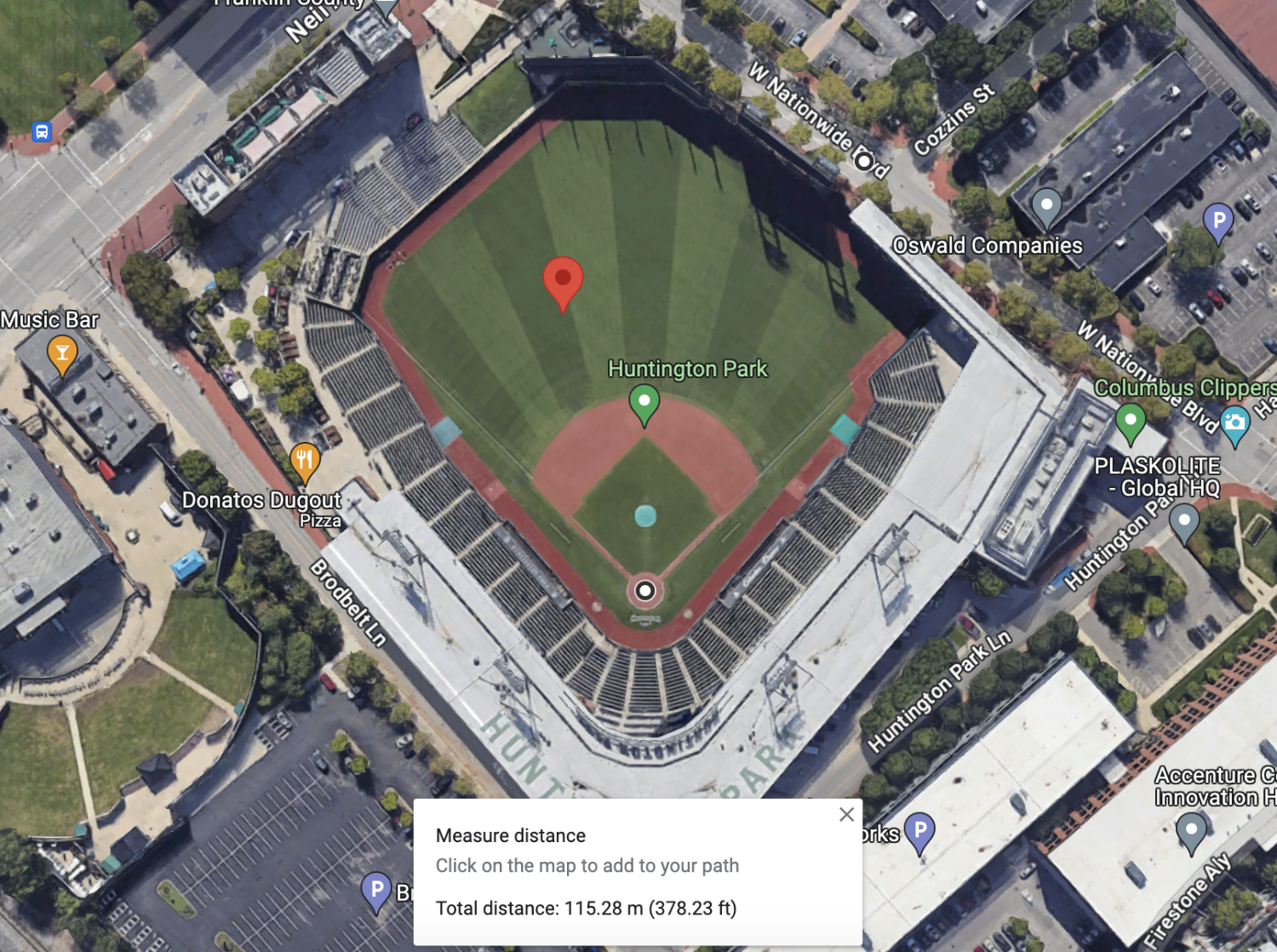
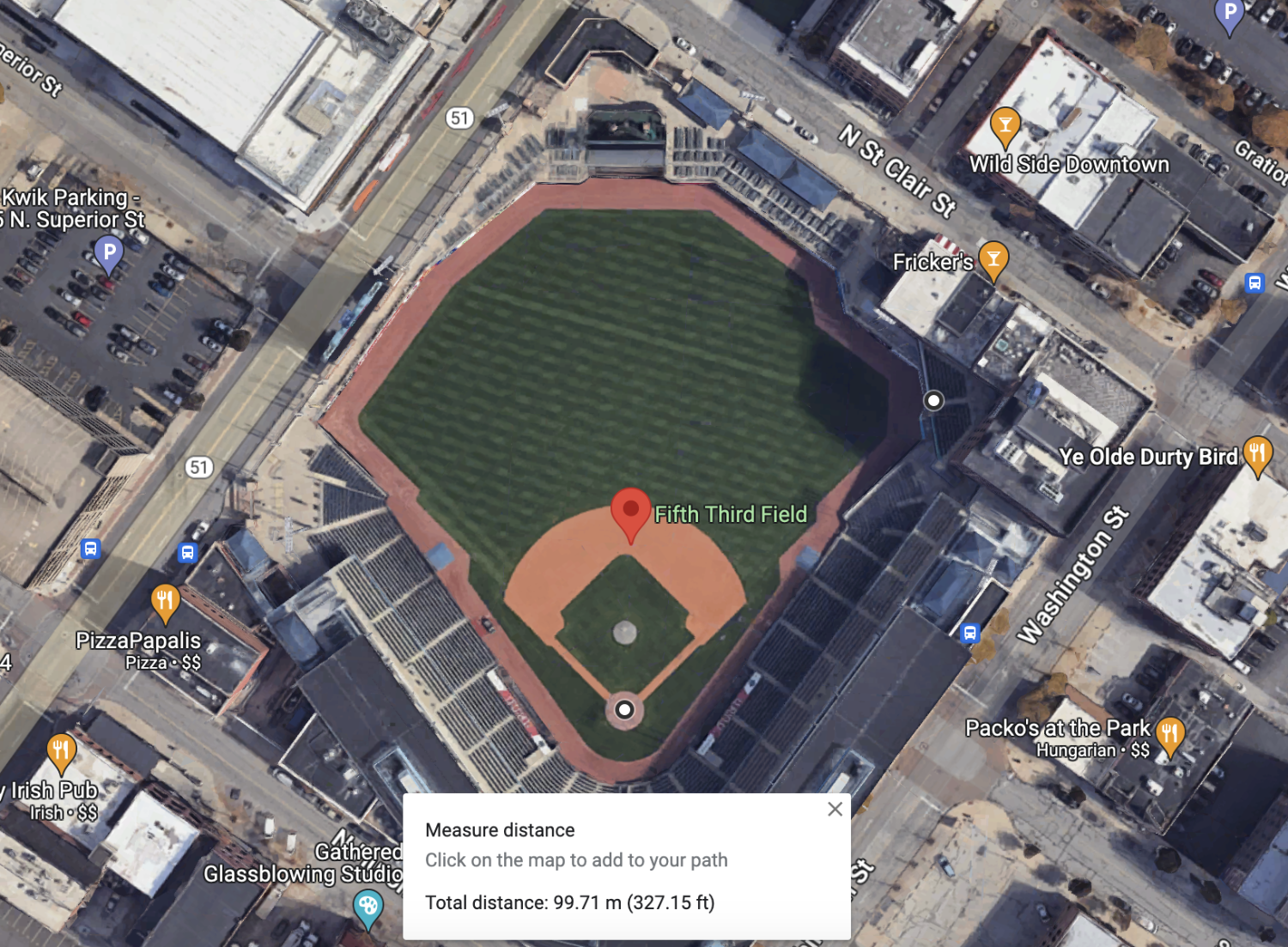
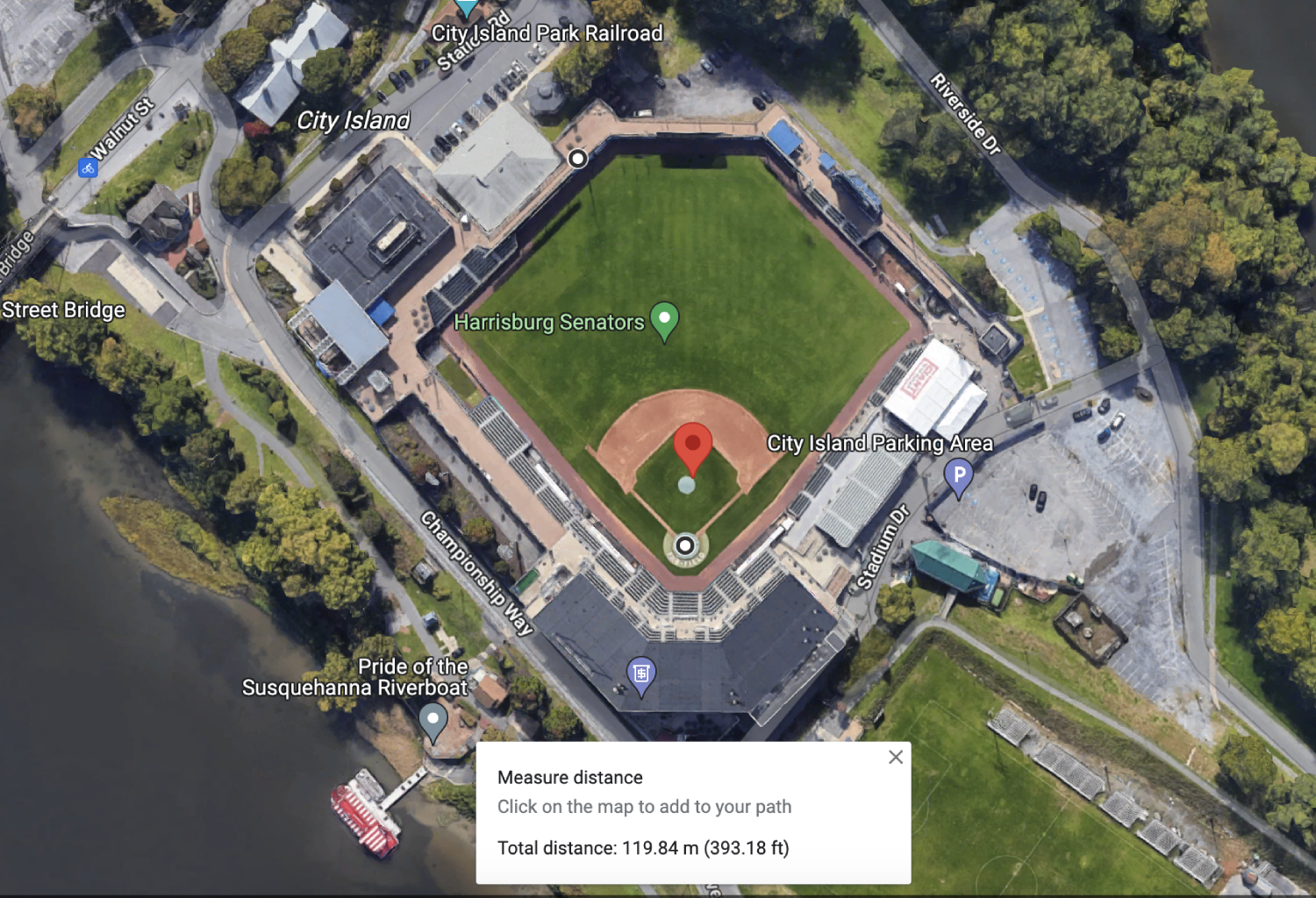
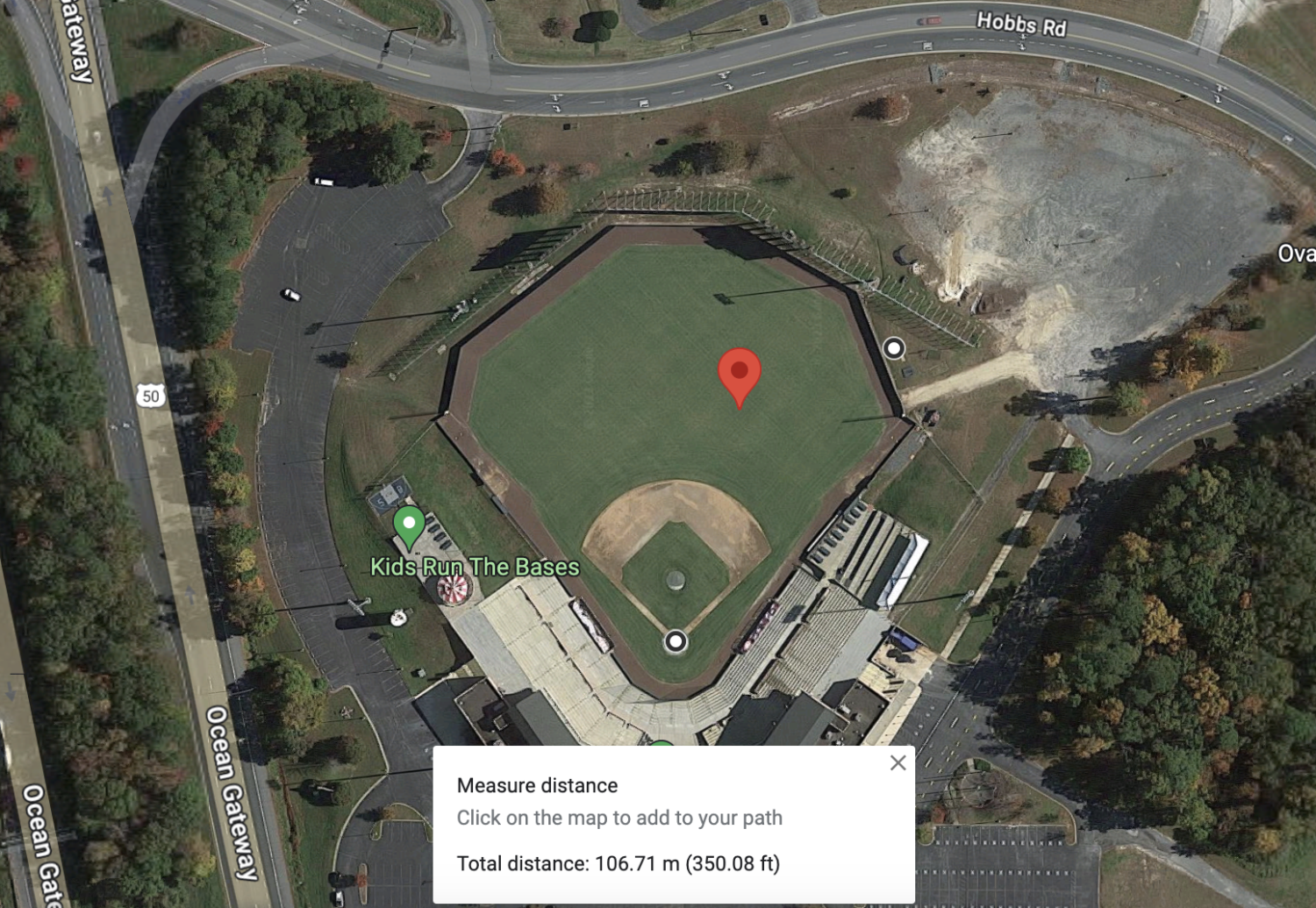
You must be logged in to post a comment.